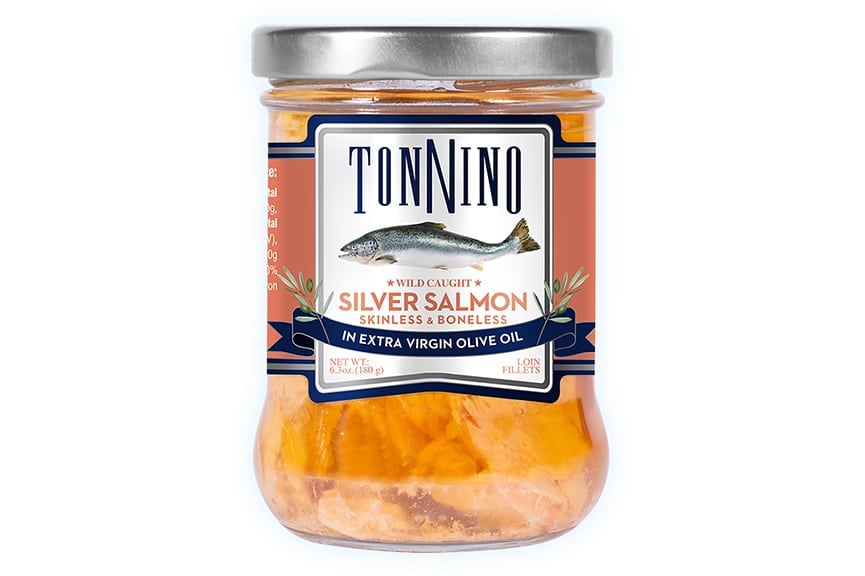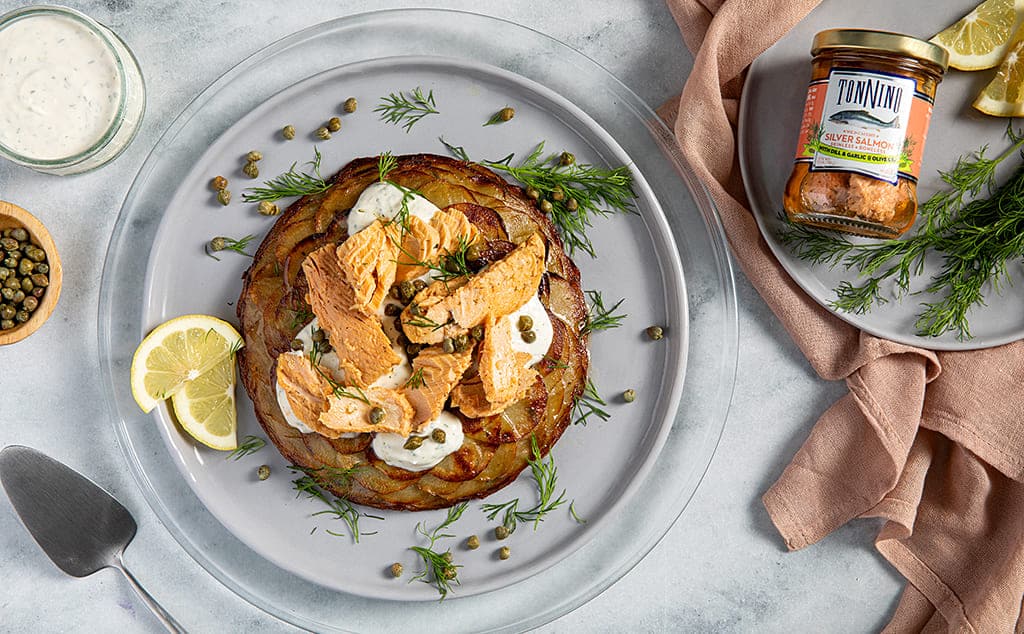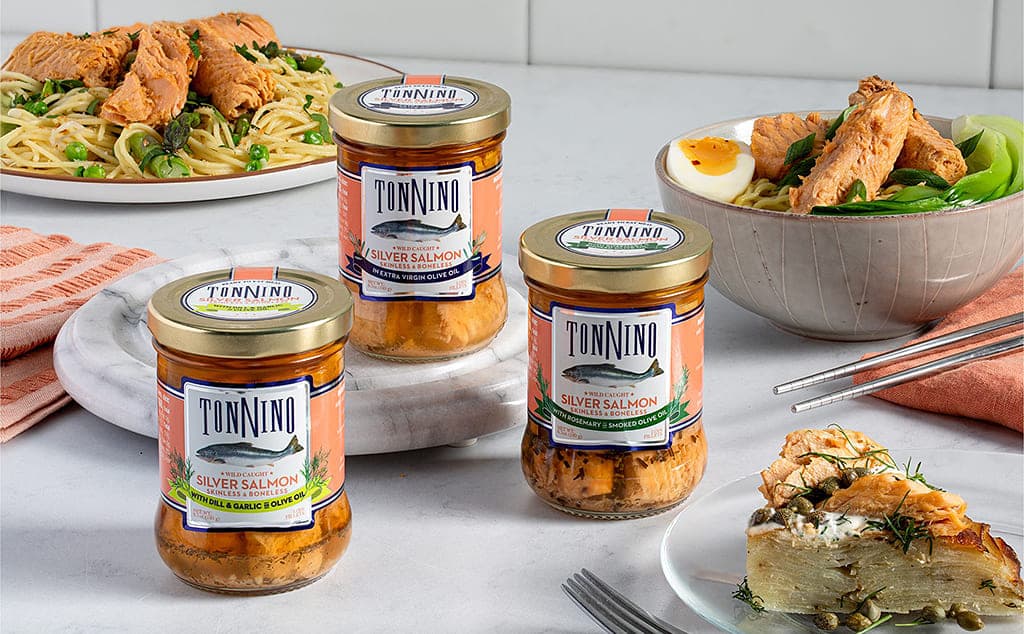Understanding canned seafood shelf life is key to maintaining quality, safety, and flavor in your kitchen. Whether you’re building a pantry rooted in wellness, sustainability, or gourmet experiences, knowing how long tinned fish lasts, and why it lasts that long, can help you make more informed, thoughtful choices.
This guide explores the shelf life of canned seafood, what affects it, and how different types of fish respond to long-term storage. You’ll also learn the benefits of tinned fish and what to look for when selecting premium canned seafood products that align with your culinary values.
What Is Canned Fish?
Canned fish refers to seafood that has been carefully cooked, preserved, and sealed to remain shelf-stable for extended periods. It’s available in various types such as tuna, salmon, sardines, and anchovies, each offering unique flavor profiles and culinary versatility. Though the format is convenient, the quality can vary significantly, especially when it comes to how the fish is handled and packaged.
At Tonnino, we take a detail-oriented approach, using whole fillets of yellowfin and albacore tuna and silver salmon rather than small portions or shredded meat. These fillets are sealed in either jars or cans and preserved to maintain their integrity over time. This careful preparation ensures that each bite delivers the full flavor and texture of the original fish.
Whether you’re elevating a weekday lunch or preparing an elegant starter, explore our selection of gourmet tuna and salmon designed to suit every refined palate.
History of Canned Fish
The history of canned fish dates back to the early 19th century when the French government offered a prize for a new method of food preservation. Canning quickly became a practical solution for feeding soldiers and sailors during long journeys, providing a protein source that didn’t rely on refrigeration.
By the mid-1800s, the method had expanded globally, becoming a commercial industry that transformed the way people consumed seafood. Over time, canned fish evolved from an industrial convenience into a pantry staple, offering not just longevity but also accessibility and sustainability.
Today, canned fish plays a vital role in modern kitchens and responsible consumption. Brands that focus on quality, traceability, and ethical production—like Tonnino—carry this tradition forward by preserving seafood in a way that honors both its origin and its culinary potential.
To see how we approach seafood processing with care, visit our quality page.
How Long Does Canned Seafood Last?
If stored properly, most canned seafood can last three to five years or even longer. Several factors influence how long tinned fish lasts, including the type of fish, packaging material (glass vs. metal), preservation method, and storage environment.
To ensure maximum shelf life:
- Store cans and jars in a cool, dry place.
- Avoid exposing them to heat or direct sunlight.
- Keep containers away from humidity, which can cause rust or seal deterioration.
Tonnino products are shelf-stable for up to four years, provided the packaging remains intact. Each jar or can is sealed to preserve quality, so when you’re ready to use it, the flavor and texture are as close as possible to the moment it was packed.
Shop our premium selection of tuna and salmon to keep your pantry stocked with high-quality options that last.
Shelf Life by Fish Type
The shelf life of canned fish varies by the type of seafood, particularly in how the fillet is processed, preserved, and packaged. Tonnino focuses on two premium options: tuna and salmon. Each have their own storage profiles and preservation characteristics.
Tuna
Tuna is well-suited for long-term storage and offers one of the most stable shelf lives in the canned seafood category. When stored in a cool, dry place, Tonnino’s yellowfin and albacore tuna fillets can maintain their quality for up to four years. The use of whole fillets and secure packaging preserves not just safety, but flavor and texture as well.
Explore our Yellowfin Tuna Fillets, Pole & Line Yellowfin, and Albacore Tuna Fillets for shelf-stable options crafted for discerning tastes.
Salmon
Silver salmon, when preserved as whole fillets, retains its richness and delicate structure remarkably well. With proper storage, Tonnino’s canned and jarred salmon can remain in peak condition for up to four years, offering a reliable and sophisticated ingredient whenever you need it.
Browse our Silver Salmon Fillets for a gourmet alternative to conventional canned seafood.
Benefits of Tinned Fish
There are many benefits of tinned fish, especially when the product is prepared with intention and care. Beyond its long shelf life, canned seafood offers:
Convenience
Tinned fish is ready to eat or serve with minimal preparation. Use it in salads, pastas, or as a standalone protein with seasonal vegetables or grains.
Nutrition
Canned seafood remains a good source of protein and essential nutrients. Seafood like tuna and salmon naturally contain beneficial fats and vitamins that are beneficial for good health.
Sustainability
Canned seafood helps reduce food waste thanks to its long shelf life and portioned packaging. At Tonnino, we prioritize ethical sourcing and responsible production that supports long-term sustainability.
Culinary Versatility
Whole fillets allow for elegant presentation without compromising flavor. Gently separate the fillet to preserve its shape and serve it with intention.
For inspiration, visit our full collection of salmon recipes and tuna recipes to explore new possibilities.
When Canned Food Becomes Unsafe
While canned food is designed to last, there are instances when it can become unsafe. Knowing the signs of spoilage ensures you consume only high-quality, safe seafood.
Look out for:
- Bulging or dented cans
- Rust or corrosion around the seal
- Leaking containers
- A sour or off-putting smell upon opening
Never taste canned seafood if the packaging shows signs of damage or the product smells off. Even premium products can become unsafe if improperly stored or mishandled.
Learn more about how our quality guidelines ensure safety and precision.
Frozen vs. Canned Expiration Dates
Understanding the difference between expiration dates on frozen seafood and canned seafood is key when planning your food purchases.
Frozen seafood typically maintains optimal quality for six to twelve months, depending on storage conditions. It requires continuous freezing and is more vulnerable to temperature fluctuations.
Canned seafood, by contrast, is shelf-stable and can last up to four years when stored correctly. No refrigeration is required, making it ideal for stocking your pantry or traveling.
Choosing Quality Canned Seafood
If you’re looking for canned seafood that delivers on both flavor and ethics, here’s what to look for:
- Clear labeling with sourcing information
- Secure, undamaged packaging
- Transparency around processing and ingredients
- A focus on long-term canned fish shelf life
Tonnino is proud to offer products that meet these expectations. Our commitment to gourmet flavor, sustainable sourcing, and exceptional quality ensures that you’re not just buying convenience; you’re choosing culinary integrity.
Explore the difference by seeing where to buy Tonnino products near you, and bring home a product that honors both taste and transparency.
Elevate Your Pantry with Confidence
When you understand how long canned seafood lasts and how its quality is preserved, you unlock a world of convenience, sustainability, and gourmet flavor. From the shelf-life variations across different fish types to knowing when a product becomes unsafe, having this knowledge allows you to build a smarter, more refined kitchen.
Tonnino takes pride in offering premium canned tuna and salmon that reflect a balance of innovation, craftsmanship, and responsibility. With long shelf life, versatile uses, and unwavering quality, our products are designed for those who expect more from their meals.
Visit the Tonnino shop to explore our full range and bring gourmet seafood into your everyday.
Up Next






